 |
||
|
||
| ||
Today we will examine new models from Seagate, Maxtor and Samsung. Let me introduce the participants. Maxtor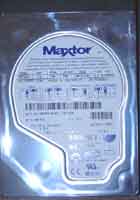 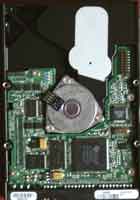 Maxtor 541DX The 541DX line is a follower of the 531DX. It has the same reduced thickness, load/unload ramp, the acoustic system control circuit. At the same time, the recording density is 40 GBytes per platter (or, rather, 20 GBytes per side, since there is only one head in the discs of this series). Samsung 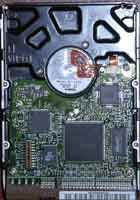 Samsung SP4004H 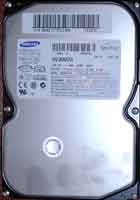 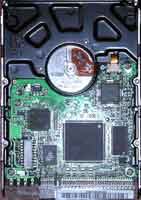 Samsung SV3002H The SP4004H is a disc with a spindle speed equal to 7200 rpm. The recording density is 20 GBytes per platter, the buffer size makes 2 MB. The model is of a 40 GBytes capacity. The line consists of 10, 20 and 30 GBytes models. The SV3002H - is the latest model with a spindle speed being 5400 rpm. The recording density is 30 GBytes per platter, but the buffer size is only 512 KB. The line includes two models of 30 and 60 GBytes. Both models have the proprietary shock-proff technologies: Shock Skin Bumper (SSB) and ImpacGuard which were described in the last review. Seagate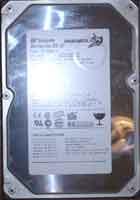 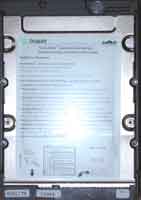 Seagate Barracuda ATA IV The hit of the review is the Seagate Barracuda ATA IV
which impresses 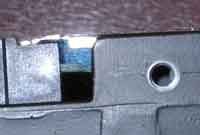 A piece of the lower SeaShield can be seen on the photo. But on the other hand, the heat removal becomes worse with such screens. The Barracuda ATA IV disc is equipped also with a new engine serving for noise elimination as well: SoftSonic on the fluid dynamic bearings (FDB). As a result, the noise level of the new Barracuda (40 GBytes) makes only 2 bels when discs are rotating and 2.4 bels in case of searching transitions of the heads. We may say that the perfection is achieved since a human ear doesn't perceive sounds quieter than 2.5 bels. The line consists of 20, 40, 60 and 80 GBytes discs. The sample we tested had a capacity of 80 GBytes. The complete characteristics are in the table. TestsThe tests were carried out according to our testing technique. Ziff-Davis WinBench 99 - 7200 rpm
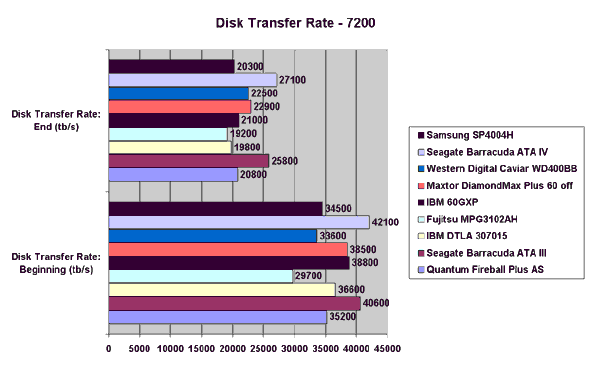 Well, the data exchange rate has risen. The Barracuda keeps on leading. The most impressing results are achieved in the end of the disc in reading operations. The results of the Samsung's model are evident: at the beginning it is a bit better than the WD400BB, at the end - a bit worse. 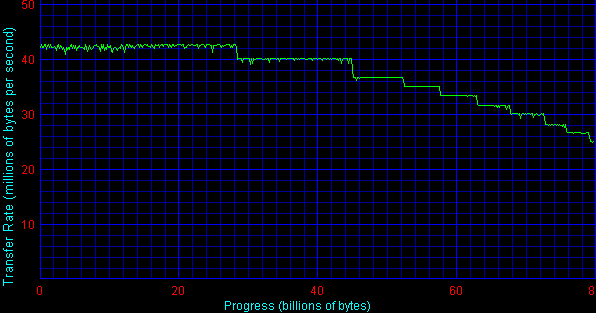 Barracuda ATA IV 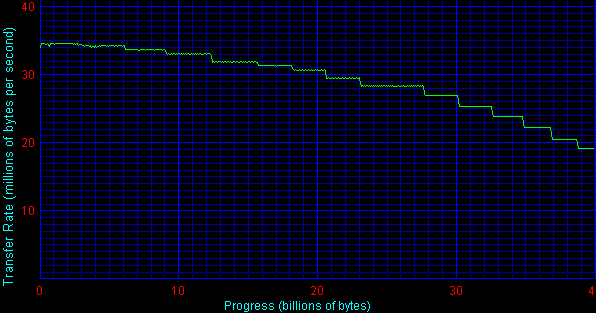 Samsung SP4004H The Barracuda shows outstanding results! The first two zones take more than a half of the disc, and a reading speed here is 40 tb/s and higher. The SP4004H shows nothing extraordinary. 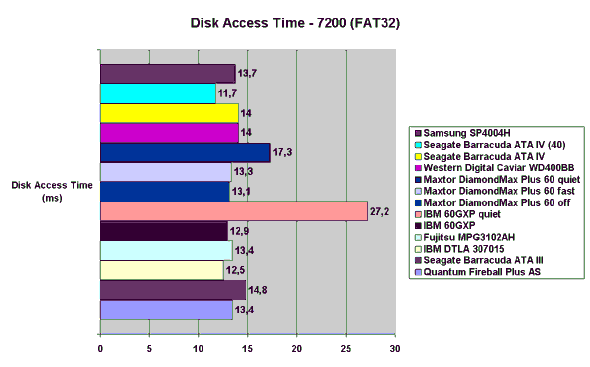 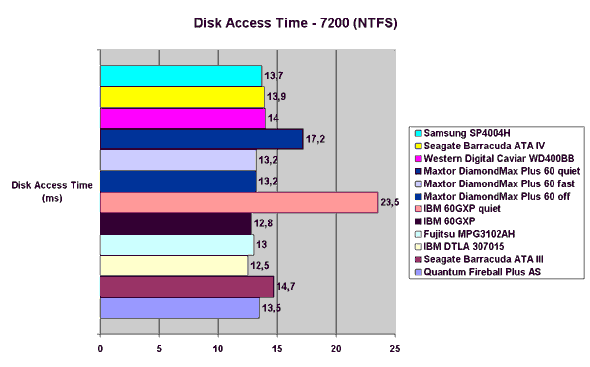 Well, the access time of the Barracuda has twice improved as compared with its predecessor! The gap separating this model and its competitors has now become narrower. The difference of the obtained results from the specified in the documentation (4.17 + 9 = 13.17 ms) is easy to explain. Such parameter as access time is measured with a special technological interface, that is why the interface delays outside are not taken into account. The SP4004H performs quite well. Now let's look at the operation in standard applications. 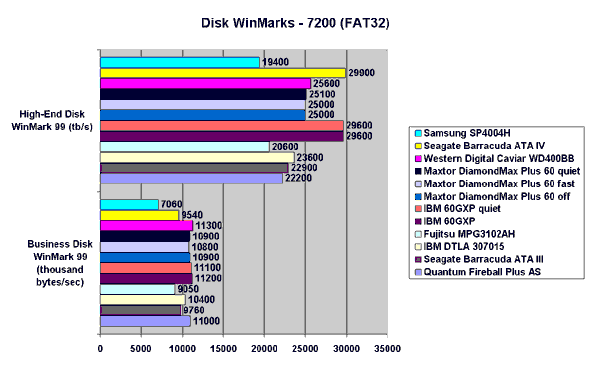 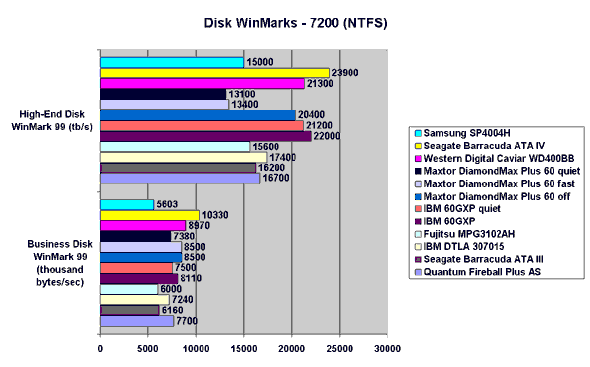 The High-End Disk WinMark has brought a victory to the Seagate and a defeat to the Samsung. Nevertheless, in the Business Disk WinMark the Barracuda seems to feel uncertain in the FAT32. However, the Samsung is more than just certain in the last place in the table... Well, here the Seagate Barracuda ATA IV is a leader, while the Samsung SP4004H is outsider. Ziff-Davis WinBench 99 - 5400 rpmSince the results of the Maxtor 541DX do not depend on the acoustic management settings the results are given only for the mode with the acoustic management disabled. It should be noted that the acoustic management utility from Maxtor should be used carefully, or better left aside at all. We managed to enable the mode we wanted at the third attempt, at best. In all other cases the disc fell into some vague mode. 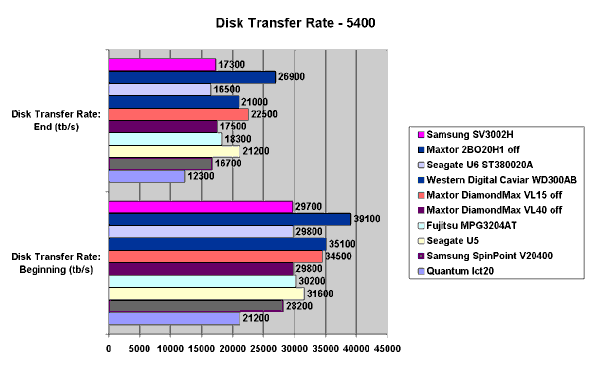 In the linear reading speed the Maxtor's disc falls behind only the Barracuda. The Samsung has nothing new to boast about. I think the approach here is the same as in the U6 - the larger capacity is achieved at the expense of the higher track density, while the speed is the same. 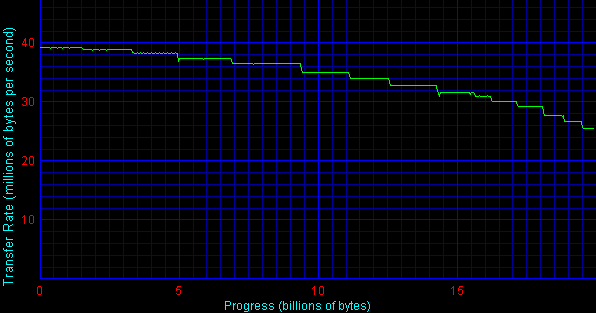 Maxtor 541DX  Samsung SV3002H The Maxtor has almost ideal graph of reading, while on the graph of the Samsung you might notice a little saw. 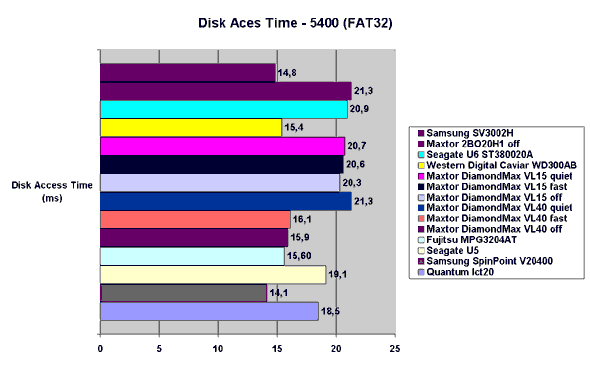 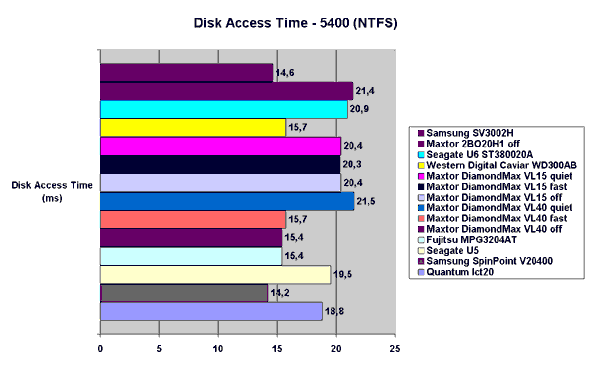 Well, such a recording density makes the access time rise. Therefore, the results of the IOMeter test might be rather sad. The Samsung, on the contrary, will probably have good results in this test.  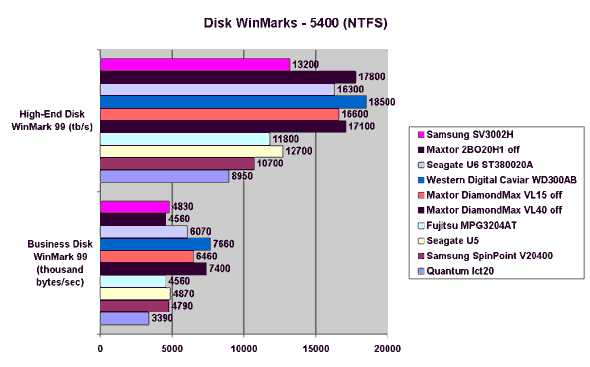 Now the Ziff-Davis Disk WinMarks tests. In the Business Disk WinMark the results depend on the access time, that is why the new Maxtor doesn't shine here. However, in the High-End Disk WinMark the Maxtor performs much better. For the Samsung the low results in the Disk WinMarks have become nearly a tradition. The increased buffer size doesn't improve the situation. It seems that the algorithms of operation with a cache-buffer are still raw. The complete test results can be found in the table. Intel IOMeter - 7200 rpm 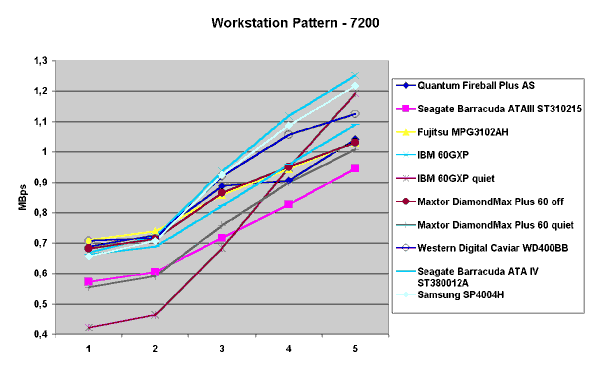   The Samsung has unexpectedly approached the leader. So, if the data exchange rate is rather good according to the synthetic test, then why is it so poor in the ZD Disk WinMarks??? Maybe, the problem consists in the algorithms of operation with the buffer... Intel IOMeter - 5400 rpm
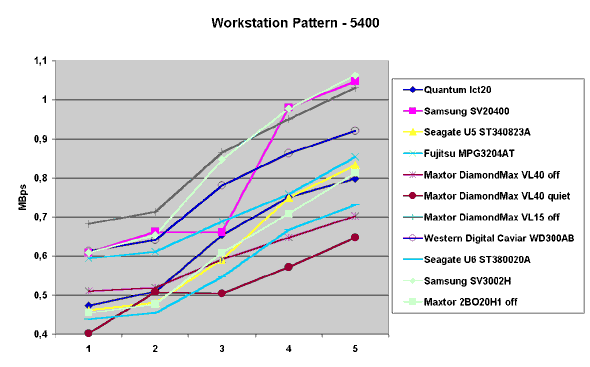 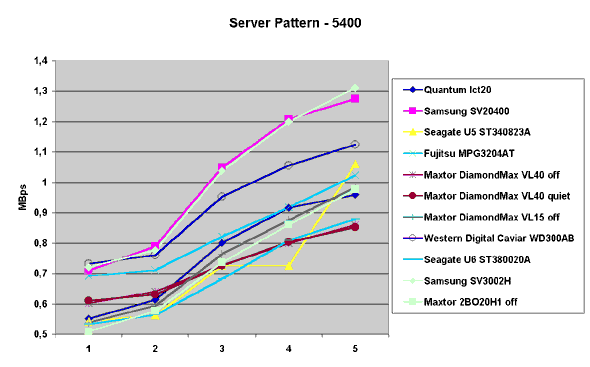  The Samsung is again among leaders. The Maxtor is a loser; it falls behind even its predecessor. The complete test results can be found in the table. NoisenessLoud discs today are too difficult to find. All our participants make much
less noise than a fan of a power supply unit does. The Barracuda
ATA IV is so noiseless that you will hardly hear anything even
ConclusionThe Seagate Barracuda ATA IV, as you may assume, is a new leader
Write a comment below. No registration needed!
|
Platform · Video · Multimedia · Mobile · Other || About us & Privacy policy · Twitter · Facebook Copyright © Byrds Research & Publishing, Ltd., 1997–2011. All rights reserved. |